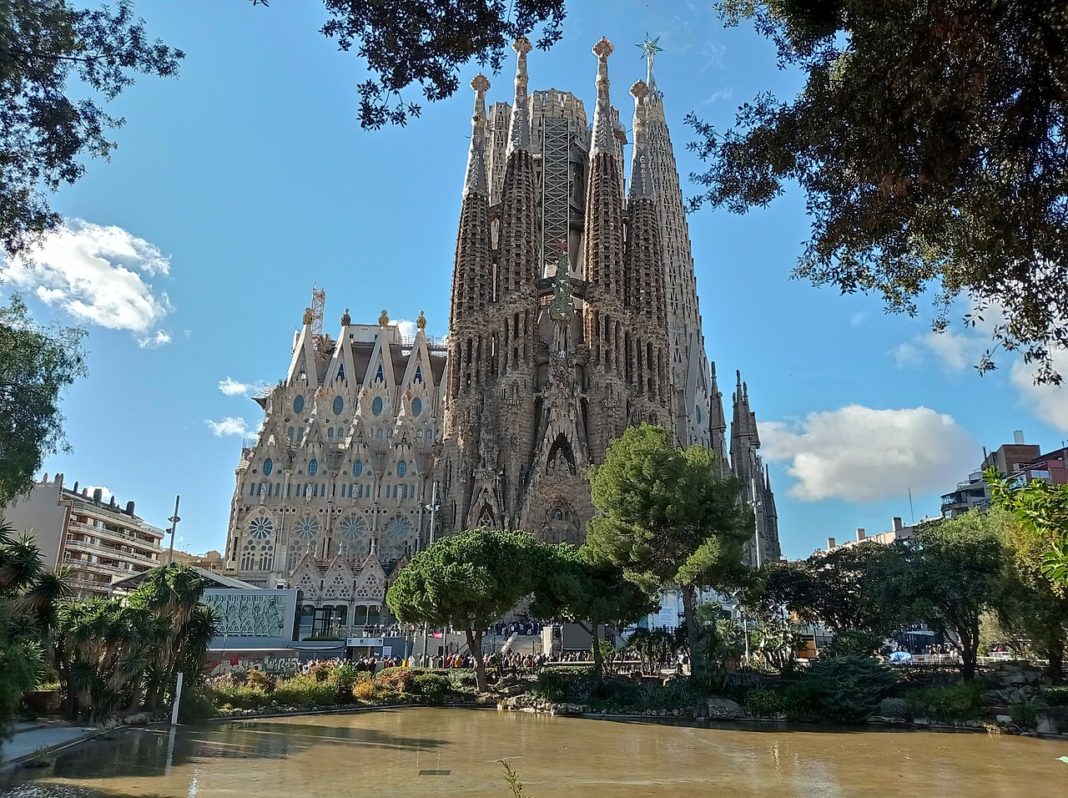On 19 March 1882, construction of the Sagrada Família began under architect Francisco de Paula del Villar. Relying solely on private donations, the Sagrada Família’s construction progressed slowly and was interrupted by the Spanish Civil War. After many conflicts, some of the project’s greatest challenges remain, including the construction of ten more spires, each symbolizing an important Biblical figure in the New Testament. It was anticipated that the building would be completed by 2026, the centenary of Gaudí’s death, but this has now been delayed longer due to the COVID-19 pandemic.
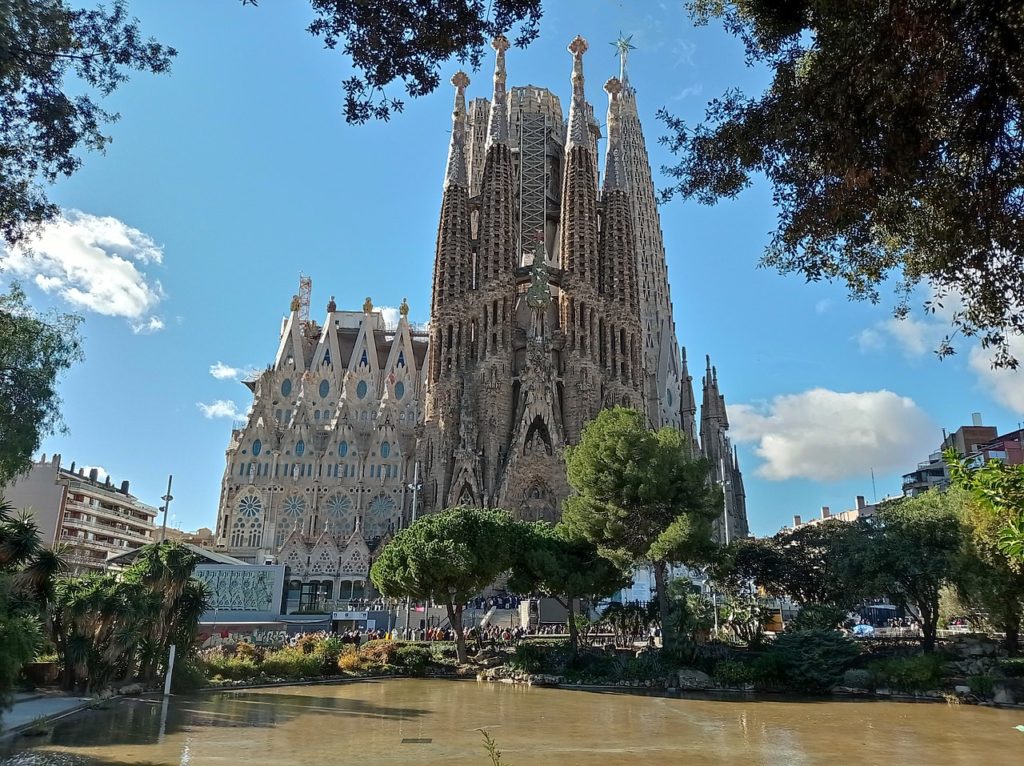
The style of the Sagrada Família is variously likened to Spanish Late Gothic, Catalan Modernism or Art Nouveau. While the Sagrada Família falls within the Art Nouveau period, Nikolaus Pevsner points out that, along with Charles Rennie Mackintosh in Glasgow, Gaudí carried the Art Nouveau style far beyond its usual application as a surface decoration.
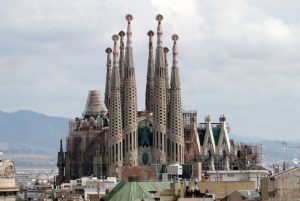
While never a cathedral, the Sagrada Família was planned from the outset to be a large building, comparable in size to a cathedral. Its ground plan has obvious links to earlier Spanish cathedrals such as Burgos Cathedral, León Cathedral, and Seville Cathedral. In common with Catalan and many other European Gothic cathedrals, the Sagrada Família is short in comparison to its width and has a great complexity of parts, which include double aisles, an ambulatory with a chevet of seven apsidal chapels, a multitude of steeples and three portals, each widely different in structure as well as ornament.
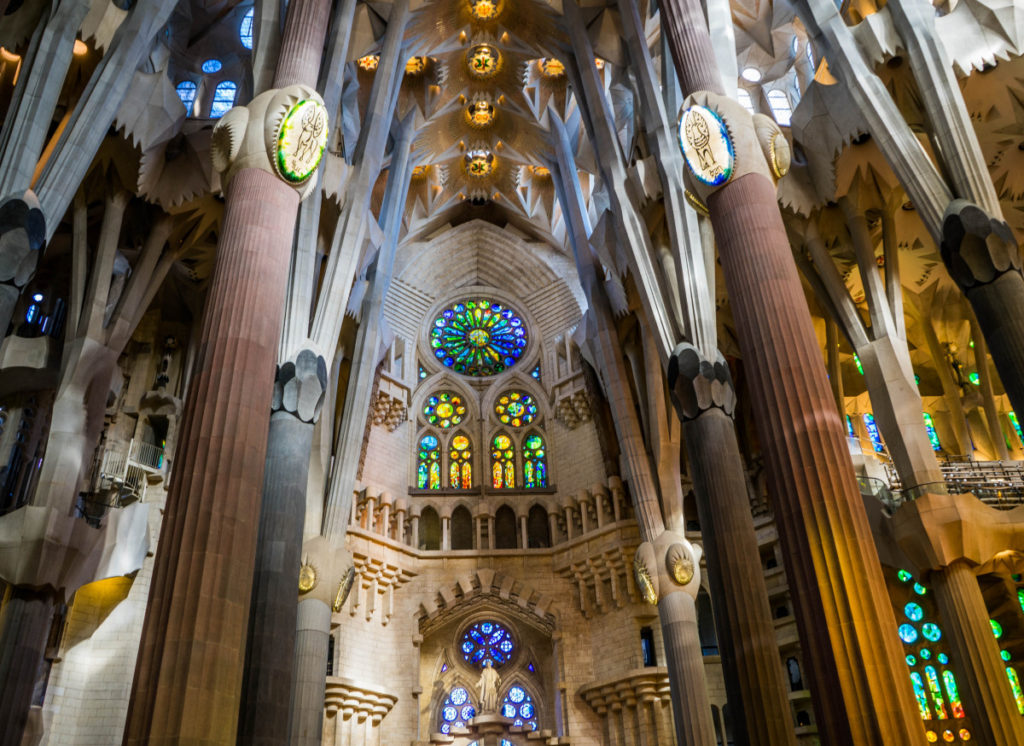
Gaudí’s original design calls for a total of eighteen spires, representing in ascending order of height the Twelve Apostles, the Virgin Mary, the four Evangelists and, tallest of all, Jesus Christ. Nine spires have been built as of 2021, corresponding to four apostles at the Nativity façade and four apostles at the Passion façade and the Virgin Mary spire.
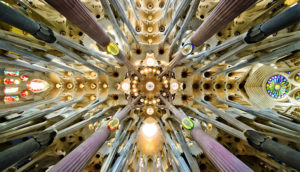
The Church will have three grand façades: the Nativity façade to the East, the Passion façade to the West, and the Glory façade to the South (yet to be completed). The Nativity Façade was built before work was interrupted in 1935 and bears the most direct Gaudí influence.
Together with six other Gaudí buildings in Barcelona, part of la Sagrada Família is a UNESCO World Heritage Site, testifying “to Gaudí’s exceptional creative contribution to the development of architecture and building technology”, “having represented el Modernisme of Catalonia” and “anticipated and influenced many of the forms and techniques that were relevant to the development of modern construction in the 20th century”.
According to Wikipedia





